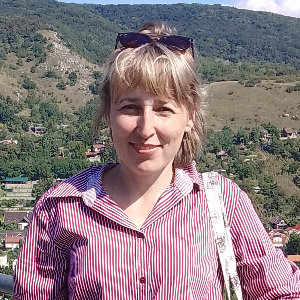Title : The ability of glycoside hesperidin to inhibit in vitro the process of epithelial-mesenchymal ttransition: A molecular aspect
Abstract:
This study was conducted with the aim of studying the ability of citrus flavanone glycoside hesperidin (Hsd) to inhibit the process of epithelial-mesenchymal transition and to clarify the possible mechanisms of its action in vitro. Epithelial-mesenchymal transition (EMT) is the transformation of intact epithelial cells into discrete motile ones that occurs in the formation of many tissue types for the time of embryogenesis, as well as during natural wound healing and tissue remodeling. However, along with this, EMT can take place in malignant tissue transformations, including fibrosis and cancer progression. That is why the search for inhibitors, including those of plant origin, aimed at suppressing unwanted abnormal transformations of tissues is relevant. The study of molecular markers and morphological characteristics of EMT was carried out on human lung epithelial cells A 549, which were cultured according to standard methods. EMT was induced by the cytokine TGF-β1 (2.5 ng/ml), determining mediators and markers of this process in lysates and supernatants using the Western blot method. It has been investigated that hesperidin (3,5,7-trihydroxyflavanone 7-rhamnoglucoside) in concentrations of 0.5-10 μmol by TGF-β1 treatment reduces expression of mesenchymal proteins in the extracellular matrix, in particular, collagen, fibronectin, α-SMA, and also suppresses the expression of inflammatory and profibrotic markers (CD 222, ADAM 17). On some of them (ADAM 10, HGF), the tested concentrations of flavanone have an ambiguous effect. Hsd reduces the phosphorylation of extracellular signal-regulated kinase (ERK) and thus disrupts the phosphorylation of proteins of the Smad 3 family - signal modulators of the transcription of the target genes of fibrosis and inflammation, in particular the synthesis of collagen and a-SMA, which indicates inhibition of the transition of epithelium to mesenchyme. Hesperidin on the background of TGF-β1 treatment suppresses some transmembrane glycoproteins, in particular Integrin αv, N-cadherin. High concentrations of Hsd leads to an increased expression of the epithelial marker E-cadherin. The study showed that Hsd has the ability to reduce EMT due to inhibition of key mesenchymal markers as well as fibrosis and inflammation proteins, which confirms the promising therapeutic prospect of citrus flavanones in the context of treating fibrosis and carcinogenesis.



